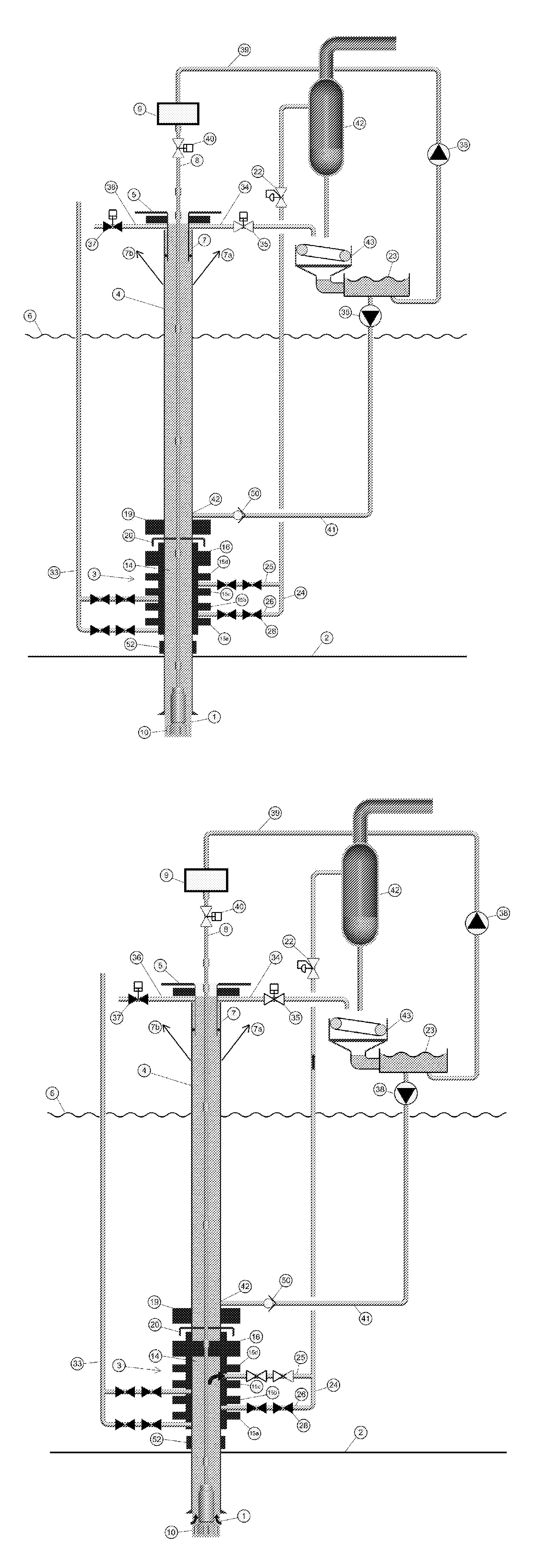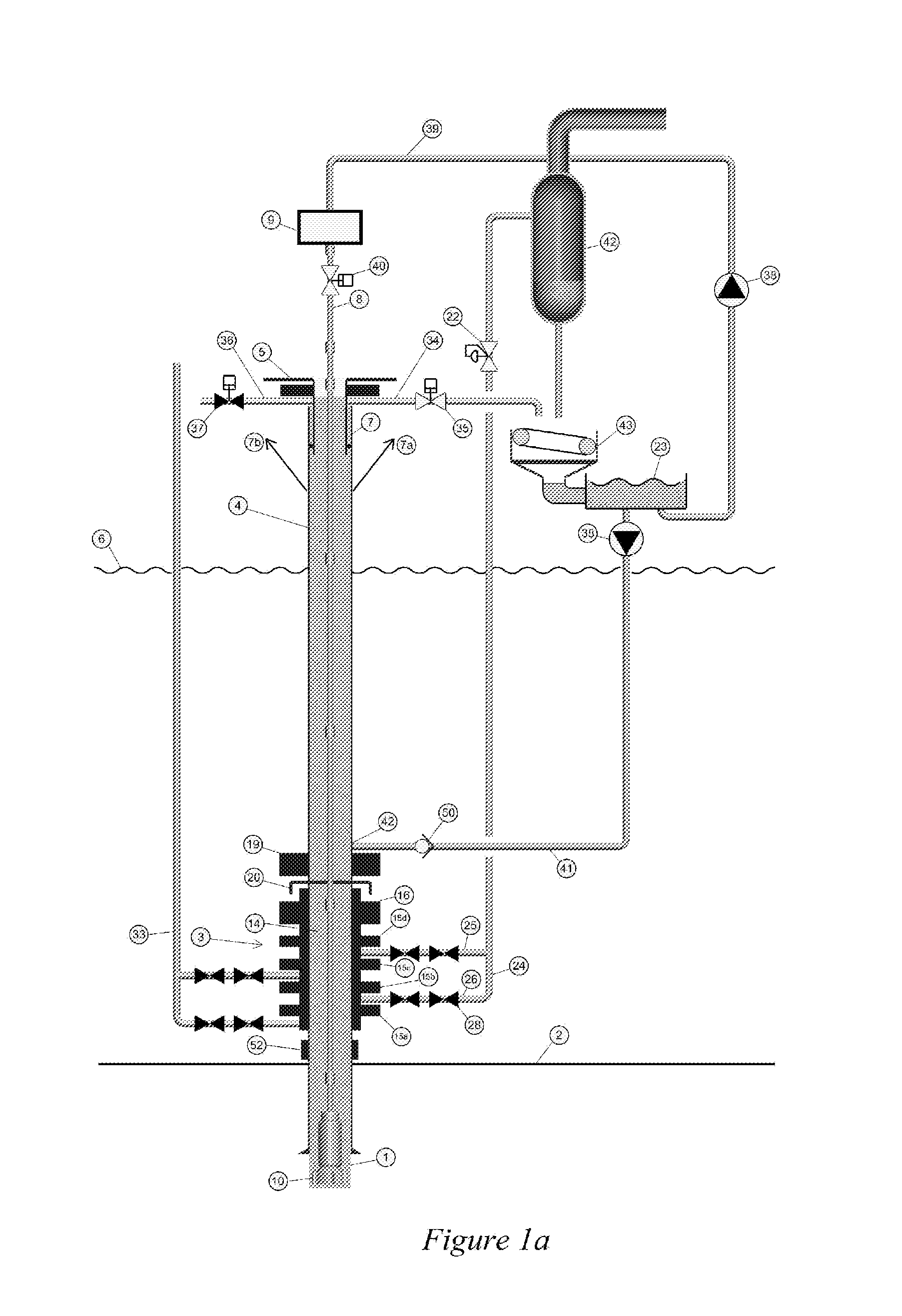System and method for drilling a subsea well
a well control system and system technology, applied in the field of oil and gas exploitation, can solve the problems of reducing drilling speed, reducing drilling efficiency, and reducing drilling speed, so as to achieve softer and more dynamic process, high differential pressure capacity of the subsea pump system, and high drilling efficiency.
- Summary
- Abstract
- Description
- Claims
- Application Information
AI Technical Summary
Benefits of technology
Problems solved by technology
Method used
Image
Examples
Embodiment Construction
[0042]FIG. 2 illustrates a first embodiment of the subsea drilling system of the invention. It comprises a well having a well bore 1. The well bore may be partially cased. Above the seabed level 2 is arranged a subsea BOP 3 with a BOP extension joint 3a which is equipped with several pressure sensors and several inlets and outlets. A riser 4 is connected to the BOP and extends to a vessel 5 above the sea level 6. The riser 4 has a slip joint 7 to accommodating heave of the vessel 5 and a riser tensioning system 7a, 7b. Above the diverter housing and diverter outlet is a low pressure gas stripper installed 53 to prevent low pressure gas escaping to the drill floor of the drilling rig. The diverter line 36 is ventilated to the atmosphere or the mud gas separator (not shown). The flow line valve 35 is closed as the drilling fluid now is returned via the subsea pump 11 and return line 12.
[0043]Drill string 8 extends from a top drive 9 on the platform 5 and into the well bore 1. The lowe...
PUM
 Login to View More
Login to View More Abstract
Description
Claims
Application Information
 Login to View More
Login to View More - R&D
- Intellectual Property
- Life Sciences
- Materials
- Tech Scout
- Unparalleled Data Quality
- Higher Quality Content
- 60% Fewer Hallucinations
Browse by: Latest US Patents, China's latest patents, Technical Efficacy Thesaurus, Application Domain, Technology Topic, Popular Technical Reports.
© 2025 PatSnap. All rights reserved.Legal|Privacy policy|Modern Slavery Act Transparency Statement|Sitemap|About US| Contact US: help@patsnap.com



